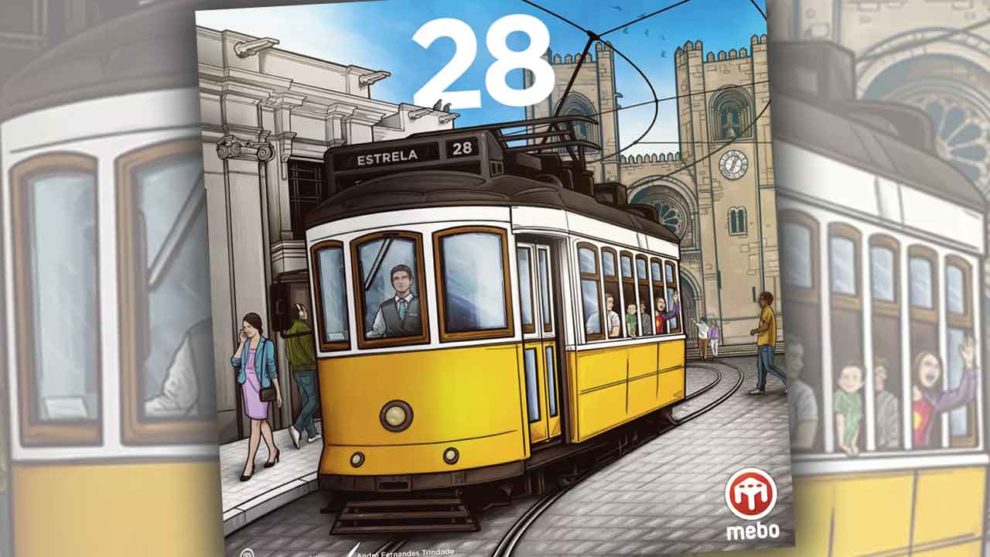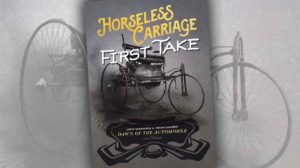Disclosure: Meeple Mountain received a free copy of this product in exchange for an honest, unbiased review. This review is not intended to be an endorsement.
When it comes to gaming experiences, great gameplay should matter. However, hundreds of games each year lean hard into a different approach: gameplay matters a bit, but production seals the deal.
I’ve played a lot of average games that were elevated by the production; Distilled, Ahoy, Brazil: Imperial, and Starship Captains are recent examples. Theme, high-quality components, and easy-to-teach mechanics all help, and make a game that might otherwise sit on the fence hop firmly onto the side of positivity.
Lisbon Tram 28 (2021, published by MEBO Games and Eagle-Gryphon Games in the US) fits this description. It’s a simple game at its core but I was impressed by how well it was elevated by the handsome look, straightforward rules, and—for reasons that are still not clear to me—a bell that players occasionally use during play to announce that a tram needs to move out of the way.
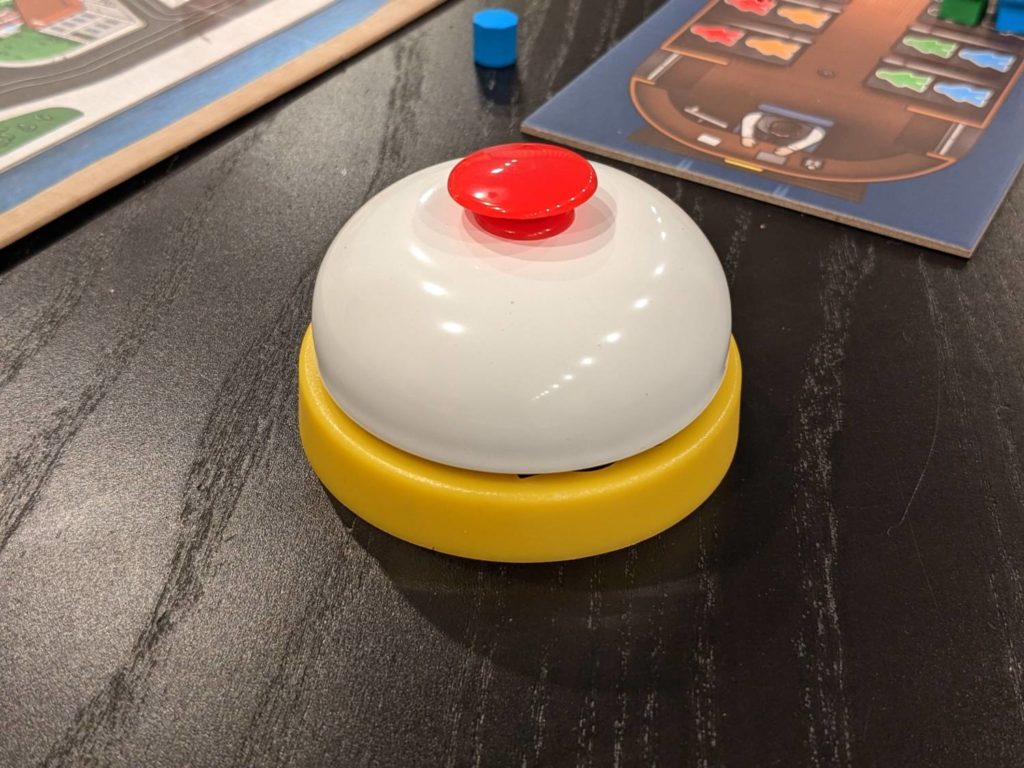
Bing!
28 (the name that is printed on the box, which is strangely not the name of the game on sites such as BGG) is a family-weight, pick-up-and-deliver, contract fulfillment experience for 2-4 players that plays in about an hour at its full player count.
A love letter to the city of Lisbon and one of its most traversed train lines, 28 puts you in the driver’s seat of a tram. Each player receives a player board representing their tram, with a driver upfront and seats for up to four of each passenger type.
The main board is a beautiful depiction of Lisbon (the artwork by André Fernandes Trindade is a highlight), with about 15 different monuments drawn on the map. Train stops are scattered between these monument spaces, and each stop begins play with three passengers (in the game’s four colors of meeples: red, blue, yellow and green) standing at each stop.
Each player starts with five cards in their hand; the cards are known as tickets. The tickets depict one of the four meeple colors, and will be used to take all of the game’s actions. A starting market of 3-4 monument fulfillment cards (depending on player count) are placed at the top of the board, then large orange cones are placed at the stop of each monument to remind players of which destinations are in play.
Monument cards are the recipes that need to be fulfilled by dropping off the correct number and color of meeples. Each monument will score 1-3 points at the end of the game, as well as a small bonus if cards are lined up with matching ticket icons printed on those cards.
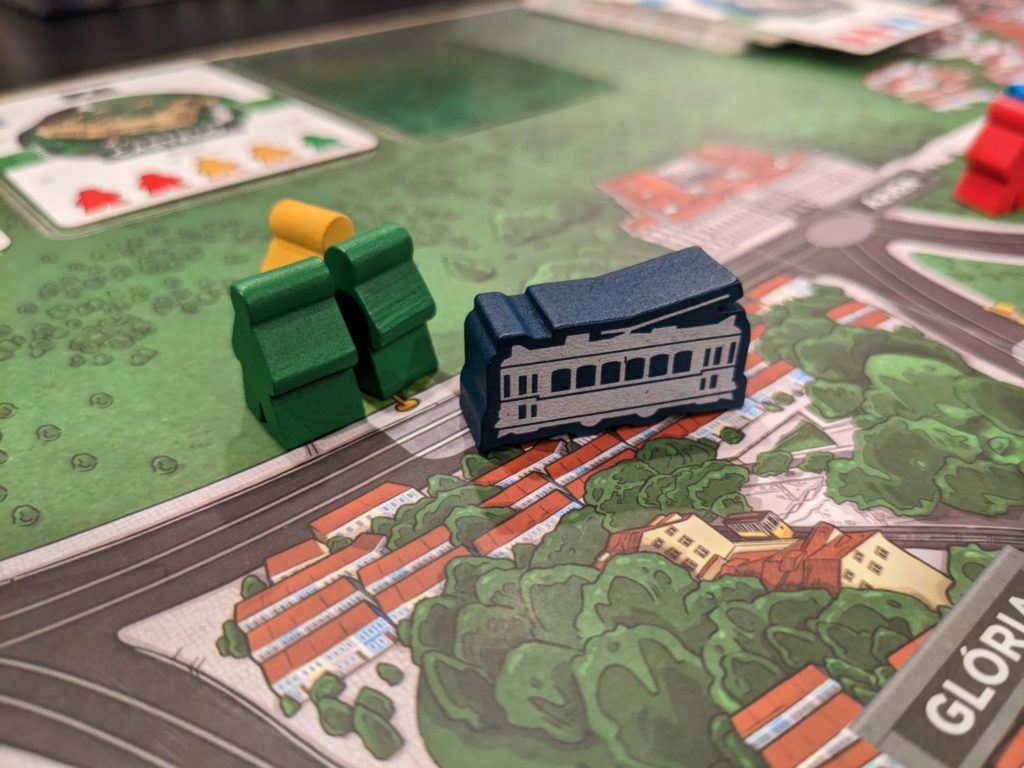
On a turn, players take up to two actions, which can be duplicated and completed in any order, from the following list:
- Move to the next spot on a track, by spending a ticket. The move distance can be increased by spending multiple cards of the same color to move that many spaces as a single action. If a train is in the way when the active player is moving, they tap the bell (Bing!) and push that train, or trains, forward and all involved players take a ticket card.
- Pick up the passengers at a train stop, as long as a player can play tickets matching the color of the meeples standing at that stop, even if the meeples can’t all fit on their tram/player board. Wanna push your luck? Tap the bell (Bing!) and a meeple is drawn at random from a bag. If the active player can legally place that drawn meeple as well as the others at the stop, they get to add that drawn meeple to the passenger haul.
- Drop passengers at an active monument (one that currently has a cone), so that the player will score that monument card at the end of play.
- Take a bonus. Four of the spaces on the board are colored in one of the four meeple shades; when a tram rests on one of these spaces and that player spends three cards matching the space color, they get an ongoing power for the rest of the game.
At the end of a turn, the active player draws four tickets to their hand. The game’s card system increases flexibility by allowing players to always trade any three cards to be a color of their choice, so there’s almost always an available action.
When a certain number of monument cards have been placed in the market, that triggers the end game as soon as that round has been completed, ensuring all players get an equal number of turns.

Bing!
28 doesn’t do anything particularly unique with its mechanisms. I taught this game to adults in five minutes or less each time I played it. The great thing about 28 is that kids will be able to handle what’s going on here with relative ease. (The box says the game is appropriate for ages 8+; I did a play with my nine-year-old and six-year-old, and they picked up the game just fine.)
Moving a marker to a space then playing matching cards to put meeples on a cute player board isn’t going to light your socks on fire, but my sense is that this was the point behind the design: accessibility. 28 has accessibility in spades.
The map is easy to read. Even from a distance, it’s easy to tell what meeples are needed to fulfill each mission monument card. The player aid gives you everything you need, but just in case you misplace the aids, the entirety of the game’s actions are printed on the back of the rulebook. (Thank you, MEBO!!!)
There’s no limit to the number of cards you can hold. There’s no requirement to take both actions, or later, three actions once you unlock that bonus. You could just pass, draw four cards, then wait for your next turn. Your tram doesn’t have to stop at train stop spaces that don’t have any passengers.
This isn’t a term I use often, but the term “laissez-faire” came to mind a few times while playing 28. That’s the attitude of letting things take their own course, and that provides a platform for a game to be played free from some of the rules-heavy games I normally get to the table.
28, then, is a race to grab meeples and deliver them to a destination. Often, you’ll load up your tram only to watch your neighbor beat you to a spot. No sweat. The next monument card might be tied to a location pretty close to your tram anyway, and once you realize that all of the monument cards max at no more than two of any one type of meeple, you’ll find ways to ensure you have two meeples in each of the four colors to maximize flexibility.
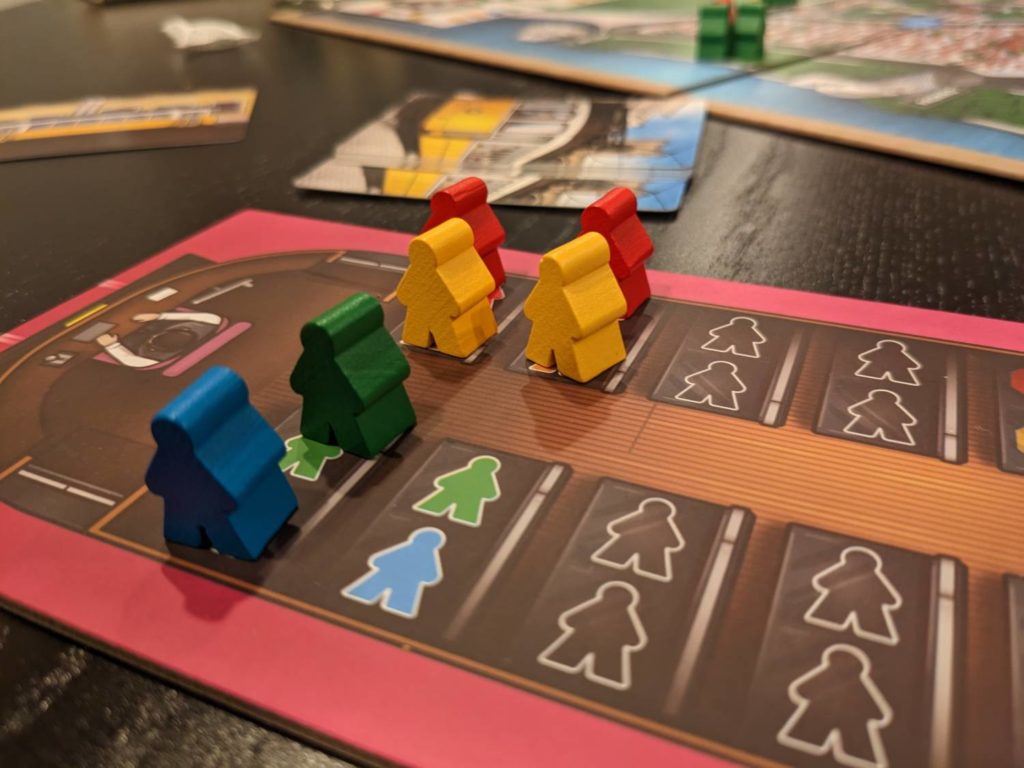
Bing!
28 is buoyed by fantastic production. It makes an experience that starts at “meh” travel to a place that is so much more.
Let’s start with the bell. It’s completely, 100% unnecessary. Yet, I kept tapping it. Sometimes, I would head up a path to tap the back of a rival tram, bing the bell (“bing” is a word), then that rival would also tap the bell, for no reason at all.
The bell is always lurking, waiting to be struck. (Bing!) I heard the bell ring when I put the shipment box on my kitchen table, before I even opened 28 up. (Bing!) I rang the bell when a player took more than 30 seconds to take their turn. (Bing!)
The game didn’t need a bell, but there’s a bell. It also didn’t need such thick cards for the tickets, but here we are. The cards are glorious, even if they are badly overpopulated by information you don’t need. (All that matters on each ticket is the meeple color. But there is much more detail than that!)
The player boards are slick, the small wooden octagons used to denote player bonuses are nice, and I love how clear the train stops were made on the board to call out where meeples should be placed during setup then reseeded with new meeples throughout play.
You remember those really large markers for On Mars (another EGG production), the ones that call out the areas of the board most important for mission scoring? That’s what the cones reminded me of when playing 28, so you’re never lost wondering where the action is during a turn.
My main issue with 28 is its length. An hour for this kind of game feels a little long. When adults are playing with children, I could see adults winning more often than the kids; there’s just enough strategy needed to understand how to maximize a turn. Still, I think kids will close the experience gap after multiple plays. Advanced players will generally try to score the three-point monuments instead of scoring the piddly one-point monument cards. In a game where a winning score might only be 12 or 13 points, focusing on the best monuments seems like the most consistent way to win.
Those concerns aside, 28 is a very pleasant way to spend time with my kids, or as a long filler with friends before heavy lifting with something like The Gallerist later in the evening. If anything, you’ll start looking into flights to Portugal while playing this game!


